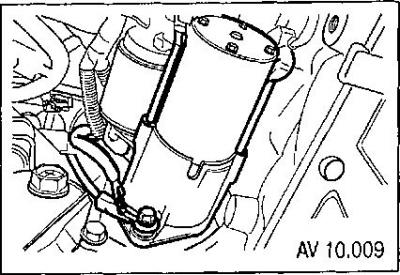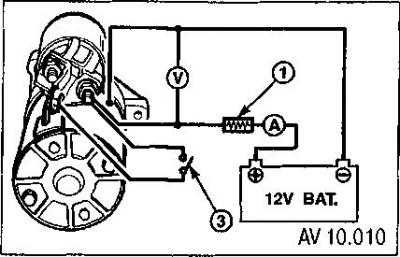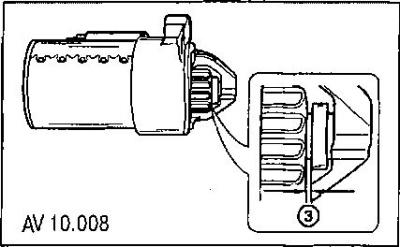
Tightening fasteners during installation
Starter mounting screws - torque 43 Nm.
Nuts for fastening wires to the solenoid relay - torque 15 Nm.
Starter performance test
Checking the solenoid relay
To check the solenoid relay, disconnect the starter winding output from the relay contact. When voltage is applied to the disconnected relay, the current consumption must be within 12-20 A.
Note: To prevent overheating and damage to the solenoid relay, test for as short a time as possible.
Checking the starter motor

When applying 10 volts to the starter without mechanical load, the current consumption should be in the range from 59 to 79 A, while the rotational speed should not be lower than 2600 rpm.
Evaluation of test results
Low speed combined with high current is a sign of:
- increased friction due to tight, dirty or worn bearings;
- curved armature shaft; shortened anchor;
- shorted inductors. Lack of rotation at high current consumption are signs of:
- direct circuit in terminals, windings or «stuck» bearings.
The lack of rotation at zero current are signs of:
- power circuit break,
- broken armature coils,
- broken brush springs
- brush wear,
- high resistance between the collector plates, or
- other reasons for which the contact between the brushes and the collector is broken.
Low speed combined with low current is a sign of:
- high internal resistance.

